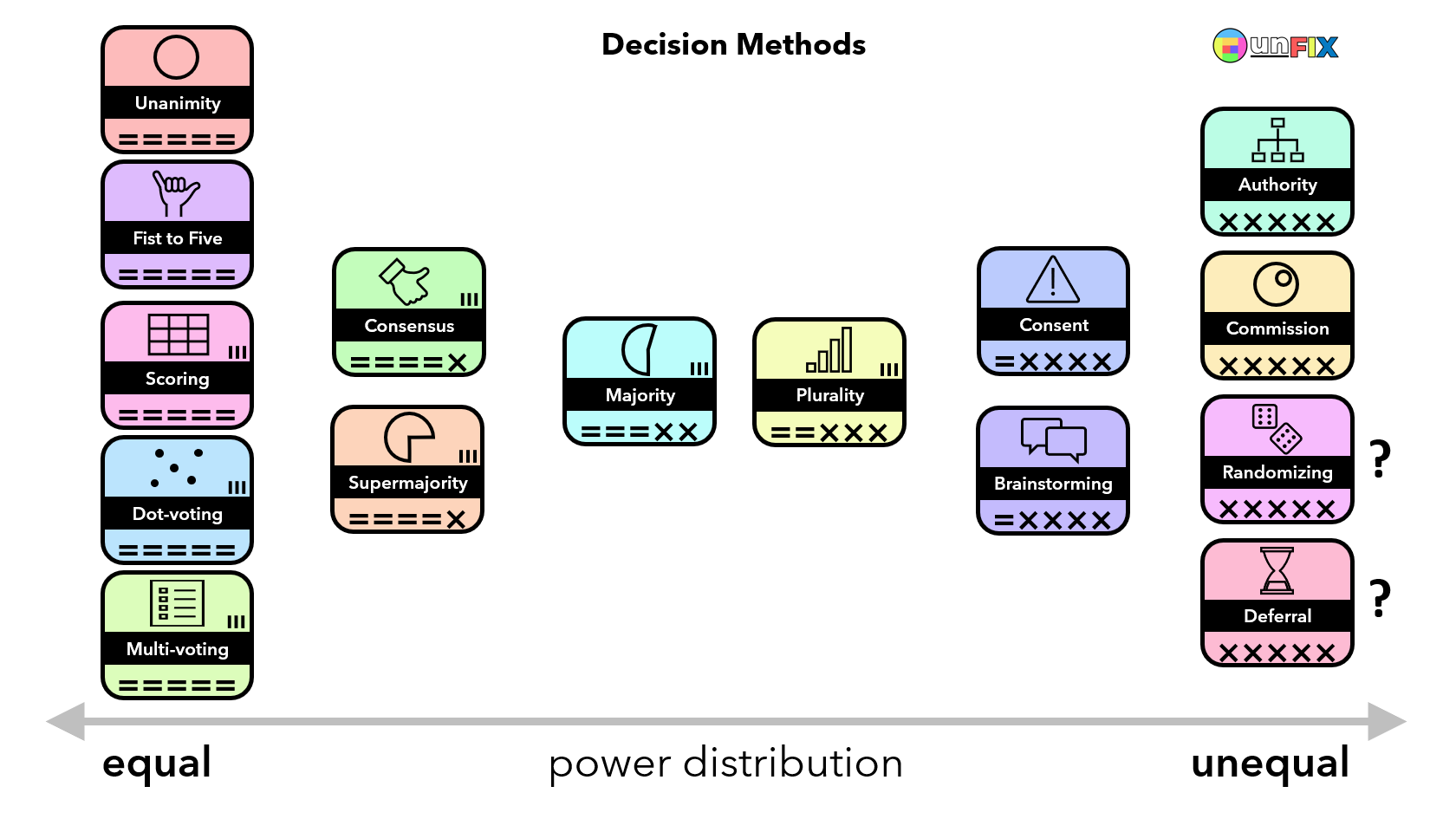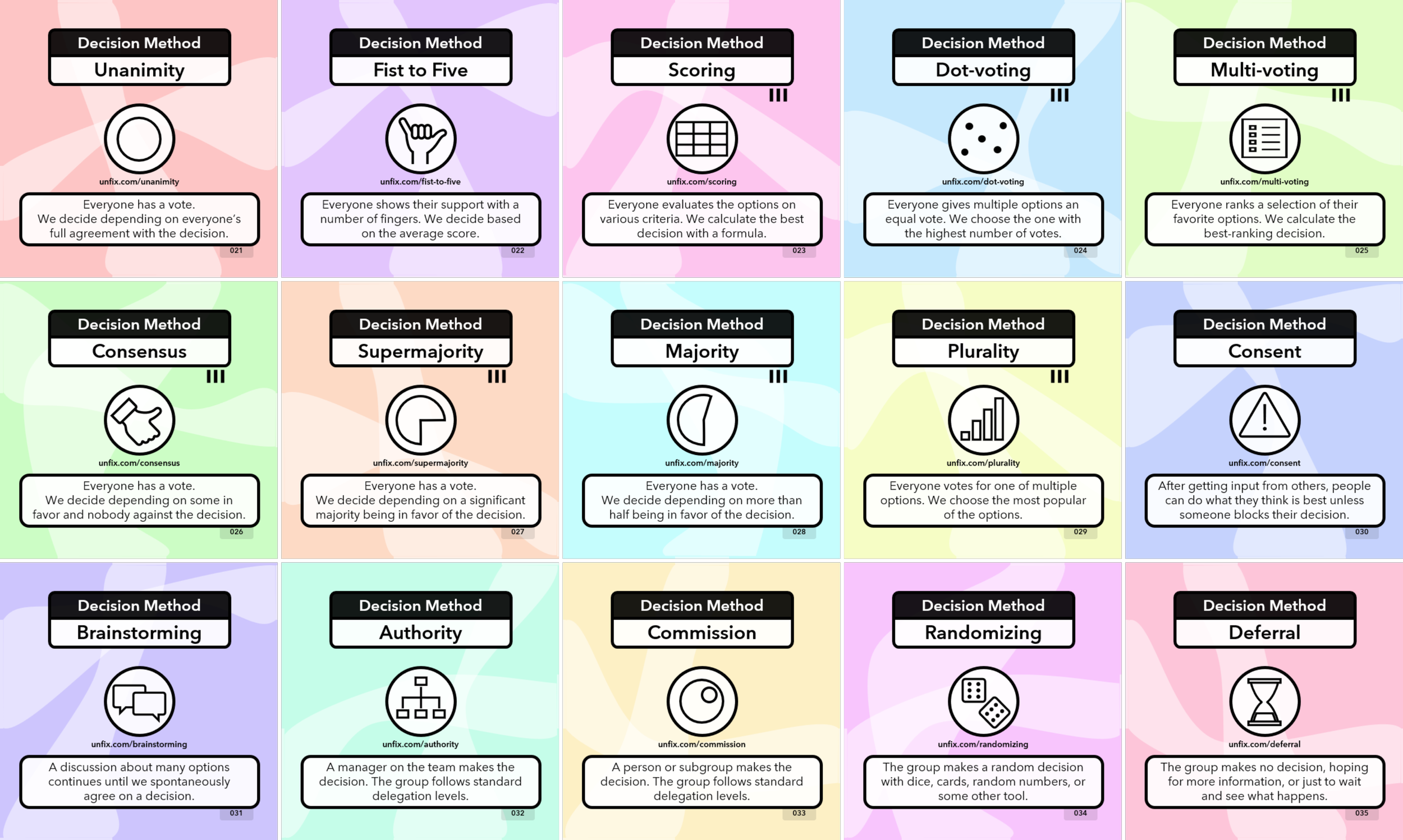Power Distribution in Decision-making
Author: Jurgen Appelo
We often say we find it important that we treat people equally. But is everyone really equal on your self-organizing team? Do all team members have an equal say in their discussions? You need to be aware there may not be an equal power distribution in your group's decision-making process.
Your team's decision-making technique has consequences for the influence and impact that team members may experience. With unFIX, we list fifteen common Decision Methods, and we find that there is quite a spread in their power distribution.
The "most equal" decision methods are Unanimity, Fist to Five, Scoring, Dot-voting, and Multi-voting. With these techniques, all participants genuinely have an equal impact on any decision made by the team.
Somewhat "less equal" are Consensus and Supermajority because these techniques allow an opening for a majority to push for their preferred decision. However, in the case of Consensus, it requires the minority to give up their resistance, and in the case of Supermajority, the majority needs to be significantly large.
With Majority decision-making, the safeguards are removed. Now, a simple majority of half the group plus one can push for any preferred decision and, if they want, they can ignore the minority completely. (For this reason, democracy is sometimes called the "tyranny of the majority".)
Plurality voting is the next step toward unequal power distribution. In this case, because the decision favors the most popular option regardless of total percentage, even a minority can win a decision, as long as the other minorities are all smaller. (A skeptic might say that plurality voting is "tyranny of the largest minority".)
Next, we find a quite unequal power distribution in the Brainstorming and Consent methods. With these techniques, it is very easy for the loudest mouth to get their way. The team must grow awareness of everyone's responsibility and influence to prevent domination in the group by a few.
Finally, the "most unequal" decision methods are Authority, Commission, Randomizing, and Deferral. With the first two, the team leaves the decision to other people (either a team manager or a subgroup). With the last two, the group leaves the decision to chance, either a randomized process or whatever happens in the environment. (However, these last two are debatable as one can also say that the entire group depends on chance equally.)
Unequal power distribution is not necessarily a bad thing. For unimportant and harmless topics, the simplicity of the decision methods on the right (in the picture above) can outweigh the problem of inequality. And it's no wonder that agile values call for trust, respect, and psychological safety in a self-organizing team. Team culture should compensate for the built-in "unbalance" of power distribution in decision techniques.
Team culture should compensate for the built-in "unbalance" of power distribution in decision techniques.
However, for any critical and risky decisions, you probably want to choose a method that leans toward the left, with more equality built into the decision technique. You may also want to do this (perhaps temporarily) when team culture still lacks the required trust and respect. Generally, the decision methods on the left are slow and safe; the ones on the right are fast and risky.
There is no one best decision method. We give you the options, and you decide what fits your context.


